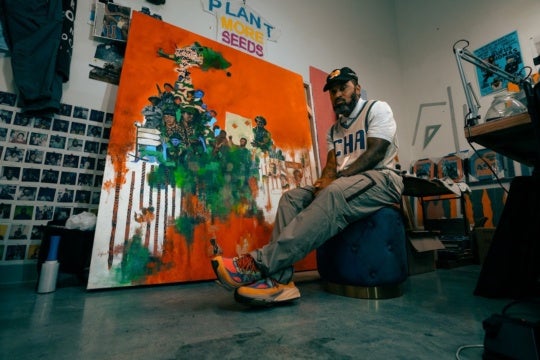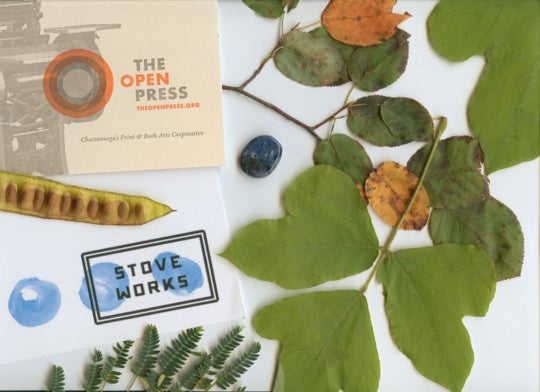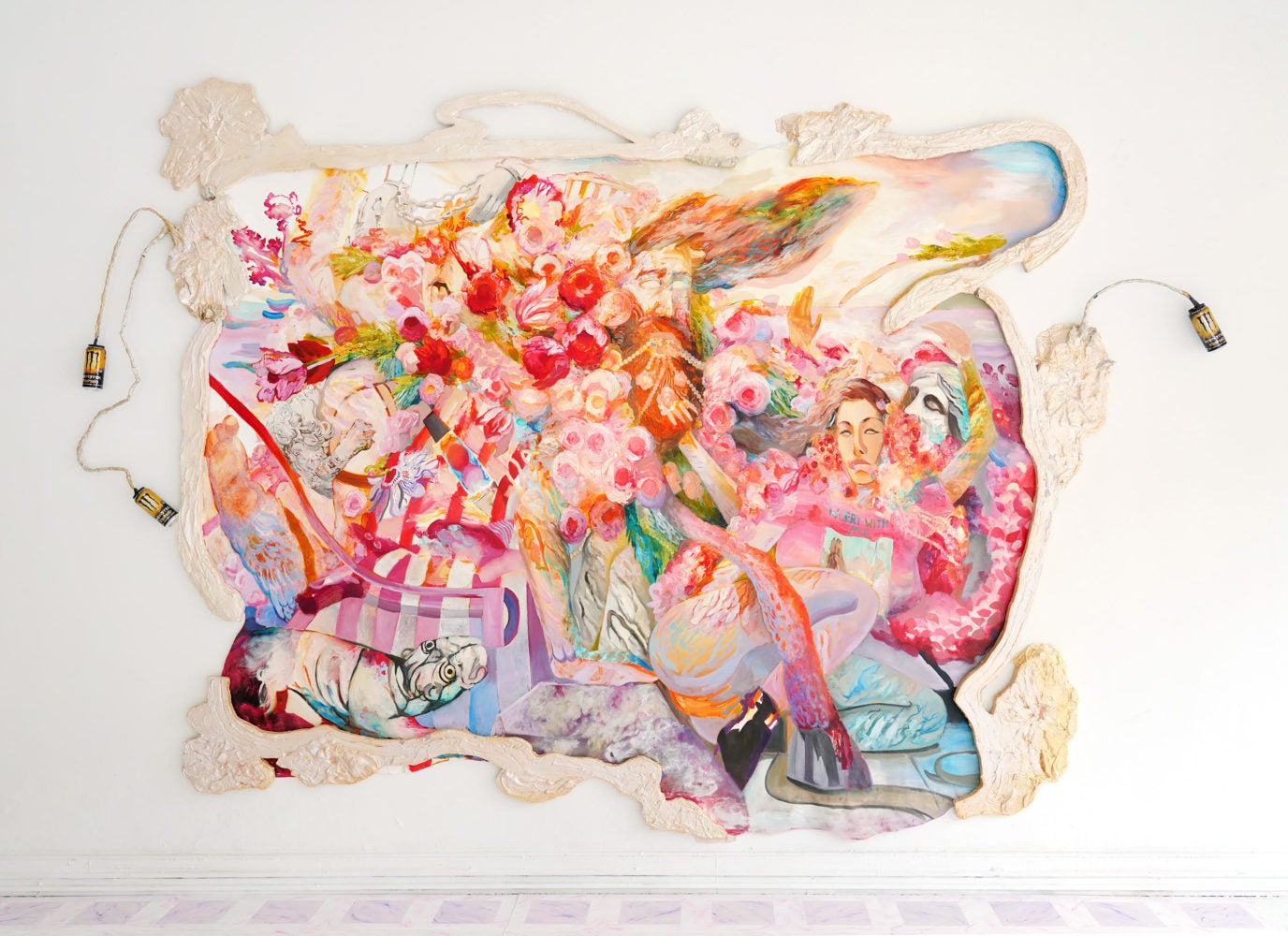
The paintings that make up Andrew Woolbright’s exhibition Expresso Your Depresso are much like the figures they depict: unwieldy, emotional monstrosities of excess and ornament. In this exhibition of seven works at Ada Gallery in Richmond, the edges of each painting billow outward and are punctured by flags and fabrics. Plaster frames barely contain the landscapes depicted within them. On one wall of the gallery, a wispy, site-specific mural of two lovers dramatically posed in an embrace is painted with just a few strokes, while trompe l’oeil tiles of lavender marble partially transform the gallery floor into a neoclassical court beneath other, more densely rendered and layered works.
As a whole, the playfully-titled exhibition Expresso Your Depresso builds on a mythos the painter has developed in past bodies of work: each figure is a Shrinebeast, a physical manifestation of a body that incorporates and merges with every lover that body has encountered. In his description of the condition these beings embody, there’s a vaguely speculative gesture towards the future utopic but also a reflection on the present state of affection. Woolbright is a Romantic and makes this clear, describing his paintings as “machines of love and affect.” Painting in the tradition of Marc Chagall and William Blake, Woolbright presents these figures through a similar sensibility of dazed romance and drama.
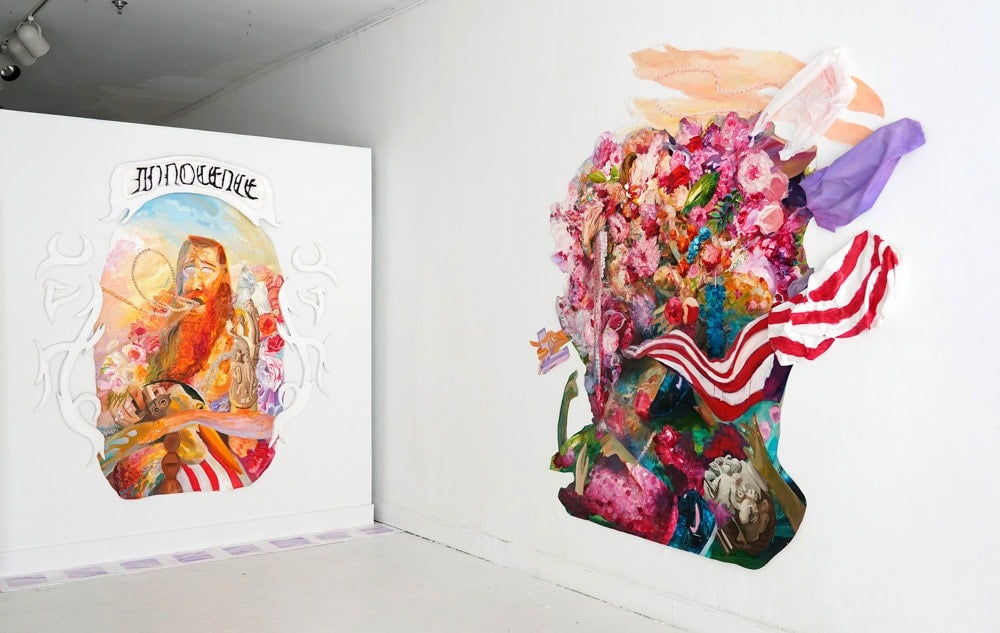
Woolbright’s characters and their landscapes feel breathable, almost breezy. The colors are saccharine, always mixed with a little too much white in their tones so that even the darkest, coldest corners feel like unlabeled hard candy getting stuck in your molars. As these colors loosely shift between distinct objects, it becomes clear that each figure blurs with its environment: landscapes of flowers, pearls, aesthetic slices of Western historical art, American flags, and pistols make up a visual bricolage that merges into one collective being. Woolbright outlines these figures as apotheoses of worry. Regarding their weapons, he says, “As to the guns, the Shrinebeasts carry them because I’m an American painter and I’m obligated to paint America.”
In moments like these, conflating the subjects and the paintings in which they live reveals a general anxiety: of the subjects’ relationship to others, of the wavering contemporaneity of romance, of the role of a new kind of excess in an age of crisis-normal, day-to-day living. But foregrounded most centrally is an anxiety about the role of Romantic painting in the twenty-first century. The deployment of an ornamentation historically reserved for Romanticism, Victorian tastes, or Rococo stylization (along with the weight of colonialism, whiteness, and structural power) are countered by moments of grotesque sloppiness. This contrast appears to be intended to bring a Romantic sensibility into the present, perhaps even questioning it, but these gestures seem half-steeped for what might simply function as a more basic interest in painting affection.
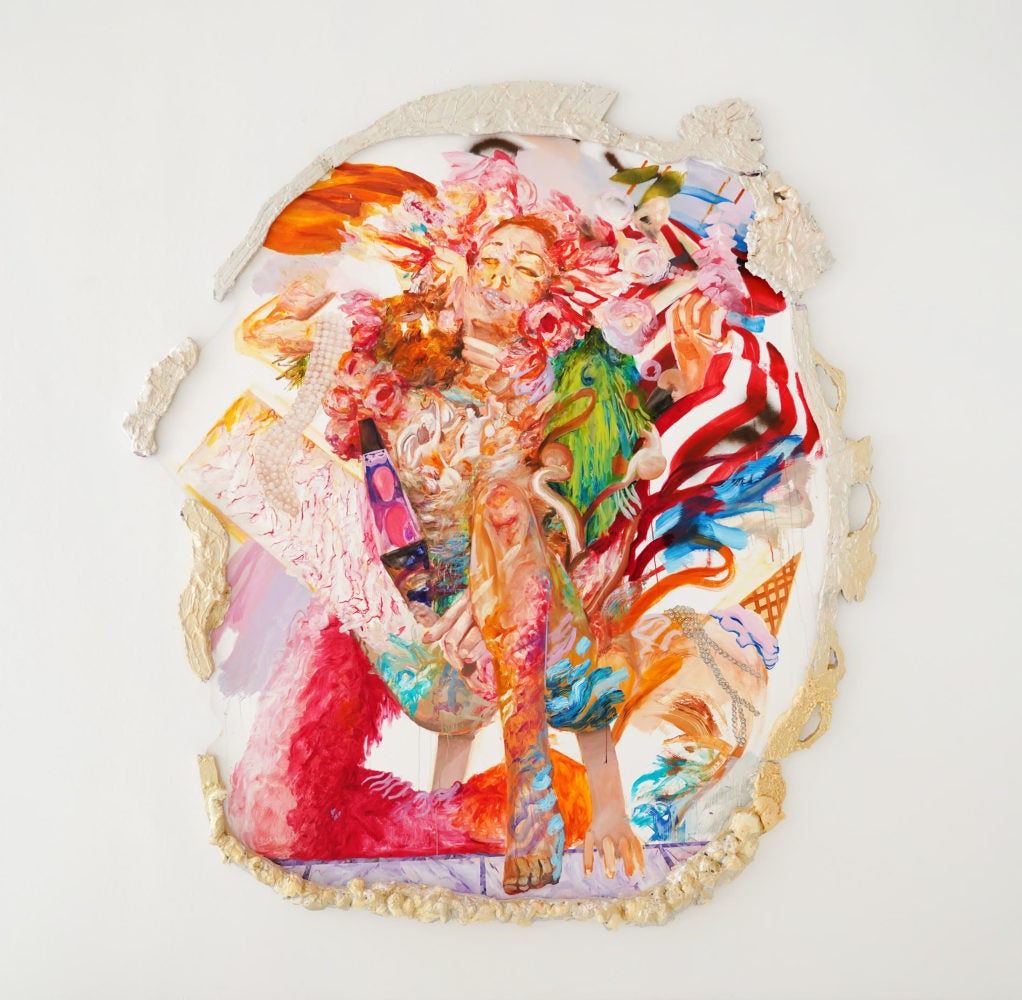
Throughout these paintings, there is an effort towards the performance of a transparent anticlimax, which could read as a self-reflexive critique of this ideology of excess. In this, a few isolated signifiers are asked to carry the weight of this critique: readymade Monster energy drink cans swaying on the margins of the work The Great Shrinebeast Furschlugginment (My Worries Going Super Saiyan (After Blake)), pistols held in proximity to red and white stripes of a distorted American flag in several works, the gloopiness of each plaster frame. As each Shrinebeast is modeled after Woolbright and his wife, there is a personal investment in this work that is tangible, but the resulting combination feels disjointed. In this, though Woolbright includes guns in his paintings, he also says he’d “much rather be painting something different.” Throughout his paintings, this ambivalence visually resonates and echoes as each figure twists and becomes part of their environment, reimagining what feeling might look like today.
Andrew Woolbright’s solo exhibition Expresso Your Depresso is on view at Ada Gallery in Richmond through July 6.


